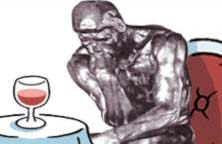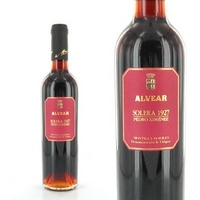Dr Vino's wine blog
wine talk that goes down easy
Take my next wine class. It’s a fountain of youth.*
Check out my next wine class at NYU starting Feb 1.
But also check out this NYT story from a couple of weeks ago. It turns out researchers think education–yes, education!–is phenomenally important in having a long life. Roll the tape:
The one social factor that researchers agree is consistently linked to longer lives in every country where it has been studied is education. It is more important than race; it obliterates any effects of income.
Year after year, in study after study, says Richard Hodes, director of the National Institute on Aging, education “keeps coming up.â€
And, health economists say, those factors that are popularly believed to be crucial — money and health insurance, for example, pale in comparison.
Now couple that with the recent studies on resveratrol and the class may just be the fountain of youth! Ponce de Leon, come hither and enroll!
We will be talking about and tasting cool things like what the heck is going on in these posts.
* Results may vary. Not guaranteed.
 tags: wine | wine classes | nyc
tags: wine | wine classes | nyc
Decanting the critic: Eric Asimov
 I was thrilled that Eric Asimov, chief wine critic of the New York Times, came so speak to my NYU class last evening. He is a super-nice and knowledgeable guy and it was fun to talk with him about the mechanics of his job as well as some trends in the wine world. We also tasted five wines together that he had written about in some of his recent stories.
I was thrilled that Eric Asimov, chief wine critic of the New York Times, came so speak to my NYU class last evening. He is a super-nice and knowledgeable guy and it was fun to talk with him about the mechanics of his job as well as some trends in the wine world. We also tasted five wines together that he had written about in some of his recent stories.
Asimov told us about the three avenues for his writing. The first is the traditional column about a theme or an issue where he often journeys to a remote corner of the wine world.
The second is the Wines of the Times tasting panel, a thematic tasting that runs every other week. Four tasters including Asimov, another member of the Dining section and two guests, meet at noon in the offices of the Times every couple of weeks. They taste about 25 wines blind from a certain theme over two hours. The wines are purchased by the Times and not sent as samples from producers or distributors. This panel format is useful for covering a lot of ground and offering practical wine picks for readers.
Asimov is ambivalent about the panel format, but seems to have made peace with it for the time being. That includes the star reviews. But at least they are better than scores, he said, since scores seem to split hairs. Is there really that much of a difference between an 87 and an 88 he wondered? I was interested to learn that even though the tasting panels have usually four tasters, Asimov writes the tasting notes and awards the star ratings himself.
The third avenue for his writing is his blog, The Pour. It is a contrast to the panel since it is free of tasting notes and offers Asimov’s more intimate experiences, drinking wines a few at a time and with friends and food.
In closing, one student asked Asimov what is a bottle of red and a white that he would bring to a friend’s house for dinner. He said it depended on several factors. Most wine gifts to hosts go directly into the host’s cellar instead of on the table that evening he pointed out. But he did offer specific advice on what to bring if you ever dine chez Asimov: champagne.
He said, she said

In my critics class at NYU last week I poured a contentious wine. Sadly, it wasn’t the famed Pavie 2003 (we are on an academic budget after all). The contentious wine this time was the Alvear Pedro Ximenez 1927, a fortified wine from Andalucia that actually started the year my grandfather graduated from college. (find this wine)
Sqaring off in one corner was the Robert Parker. And in the other was HRH Jancis Robinson. I won’t insult your intelligence and tell you who said what. Jancis made me laugh though. Roll the tape:
“The impressive 1927 Pedro Ximenez Solera, from a Solera begun nearly 80 years ago, boasts a dark amber color as well as an extraordinary nose of creme brulee, liquefied nuts, marmalade, and maple syrup. Huge and viscous, yet neither cloyingly sweet nor heavy, it is a profound effort priced unbelievably low. It is meant to be drunk alone at the end of a meal. 96 points.”
“There is also a super-stickie Alvear Pedro Ximénez Solera 1927 Montilla-Moriles for £12 a half-litre that should sweeten any 80th birthday celebrations next year – very, very dark, like ancient raisins steeped for years. If the octogenarian still has their own teeth, this should put paid to them.”
For what it’s worth, the class gave the wine a thumbs up.
 tags: wine | wine writing
tags: wine | wine writing
Pinot envy
Pinotfiles assembled in Chicago over the weekend to assess the state of the grape. We traced its social, economic, and viticutural history across three continents and then tasted that variation in the glass.
We compounded the highly variable nature of the grape with yet another factor: bottle age. I was able to source many older vintage wines for the tasting through a local retailer of fine and rare wines so it was with relish that we could taste pinots with more maturity than you can normally find on the shelves of a local shop.
Although this sample was small, I’m tempted to say that California/Oregon pinots tend not to age as well as Burgundy. The 1997 Landmark was just this side of falling into oblivion. The 1995 Williams-Selyem was still very good with supple elegance but I couldn’t help wondering if it would have been better last year. Or the year before. By contrast the 2002 Stoller Vineyards had excellent fruit and lively spice from the tannins. A year or two might bring more balance to the wine but might it also make it less fun? Should American pinot be consumed in its youth?
Of course as soon as I reach for a generalization more data emerge to trounce it. The day before the big pinot tasting I had a 1997 Ken Wright Cellars, Guadalupe Vineyard (find this wine) that had an excellent finesse and was joy to drink. And a couple of weeks ago, I had a 1998 Dehlinger Pinot Noir (find this wine) that tasted as fruit forward as it did on release.
What are you experiences with aged American pinot?
Joseph Perrier, Champagne, NV Cuvee royale (find this wine)
2004 Whitehaven, Marlborough (find this wine)
1999 Daniel Rion, Vosne-Romanee, Les Beaux-Monts, premier cru (find this wine)
1997 Landmark, Van der Kamp Vineyards, “Grand Detour†(find this wine)
2002 Serafin Pere et fils, Gevrey-Chambertin (find this wine)
2002 Stoller Vineyards, Oregon (find this wine)
2004 Loring, Garys’ Vineyard, Santa Lucia Highlands, Monterrey (find this wine)
1999 Maison Champy, Corton-Bressandes (find this wine)
1995 Williams-Selyem, Allen Vineyard (find this wine)
1990 Domaine Leroy, Savigny-les-Beaune, Les Narbantons, premier cru (find this wine)
The 1997 Landmark, Van der Kamp Vineyards, “Grand Detour,†which had Helen Turley as a consulting wine maker for that vintage, did remind me of a line in Steve Heimoff’s book about the Russian River Valley in Sonoma. Local lore says that producers can add $5 that they can charge for each word on the label. But, hey, that could often apply to Burgundy as well.
 tags: wine | pinot noir | tasting | wine classes
tags: wine | pinot noir | tasting | wine classes
Wine classes in Chicago and New York
This spring, geography is even less of an obstacle to taking one of my classes!
In the new NYU/James Beard Foundation program, we’ll be looking at the hot-button issue of modern versus traditional winemaking styles. Our journey will take us to several New World wine regions including Napa, Barossa, Washington, Mendoza and South Africa. Starts 3/23 for 5 weekly sessions. (info and registration)
And at the University of Chicago, we’ll be looking at the conundrum facing French winemakers today through the historical and cultural lens of two regions, Bordeaux and Languedoc. This class runs on Saturday afternoon, 3/25. (info and registration)
And in Chicago again, we’ll taking a varietal approach as we examine the appeal, variation, and history of the finicky Pinot Noir. (info and registration)
I hope to see you there!
 tags: wine | wine classes | Chicago | New York
tags: wine | wine classes | Chicago | New York
Chicago tastings
After a brief hiatus, I am back in blogging action. I was in Chicago and didn’t even access my email for 48 hours! (Fortunately it wasn’t that long between glasses of wine.)
I taught a one-day course at the University of Chicago entitled “critiquing the wine critics.” The participation was terrific and the wines were controversial–we had the Tablas Creek, Esprit de Beaucastel, 2002 that the NYT tasting panel had dismissed on 11/2 as “off – not exactly corked, but with musty, unattractive aromas” but that Parker blessed with 92 points. (We generally liked this wine more than the NYT’s bottle though it was not a Parker-style hedonistic fruit bomb.)
The most bizarre wine of the day was the Connor Park, Shiraz, The Honour 2002, which was a disjointed, glycerin alcohol bomb that clocked in at a stunning 17% alcohol. (Parker all but calls you a “girlie man” if you don’t like the wine by bestowing it with 95 points and writing “Readers looking for restrained, Euro-styled wines should steer clear of this behemoth.”)
Perhaps the most popular wine of the day was something that, tasted blind, one participant said tasted “Northern Rhonish” and indeed turned out to be the Domaine de Colombier, Hermitage, 2000. But it may have been infanticide to drink it this young as it undoubtedly has many years ahead of it.



